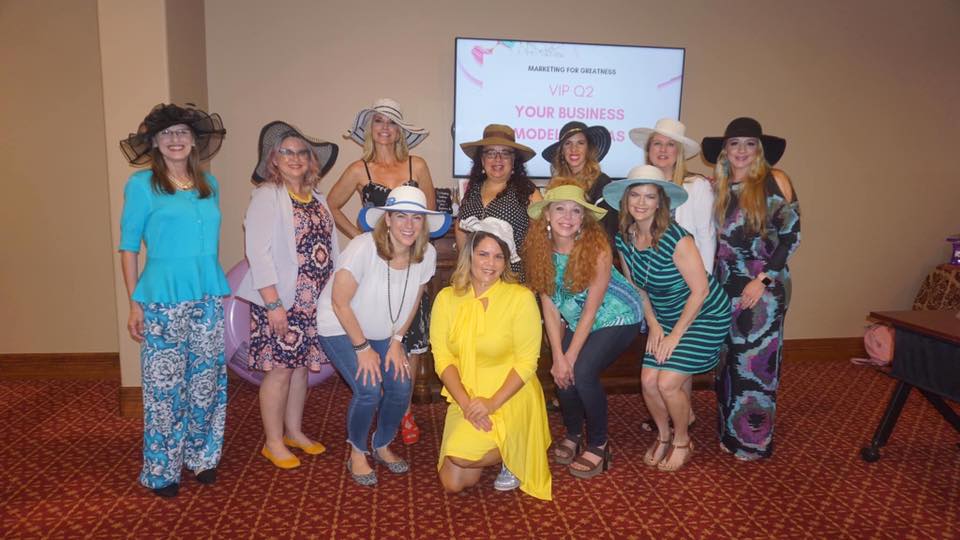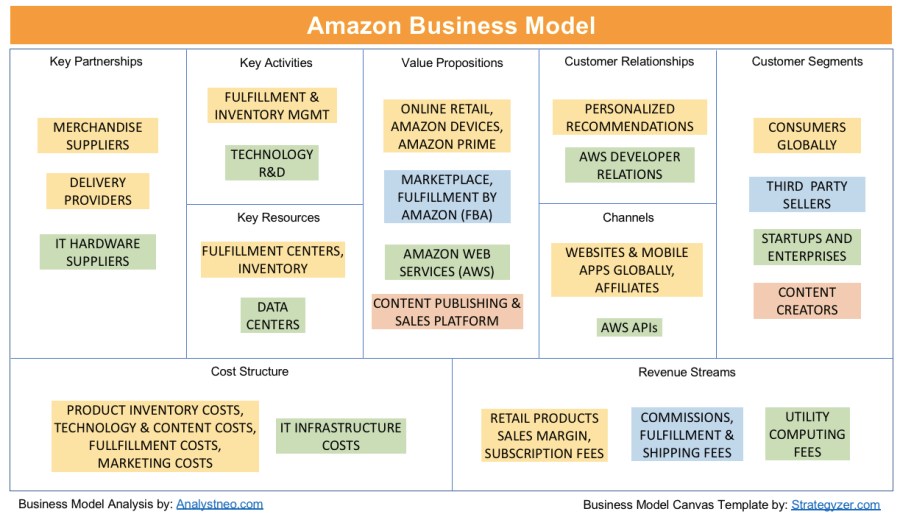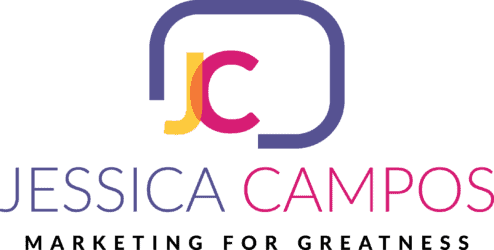Business Model Canvas: It’s Time To Bulletproof Your Business
The Business Model Canvas was created by Alexander Osterwalder, of Strategyzer. This fascinating tool has been featured in multiple publications, including Forbes, where they describe it “as simple enough to sketch on a whiteboard — and powerful enough to refocus the way you view your business”.
If you’re looking to grow your business and don’t know where to start, running your ideas through a Business Model Canvas will allow you to identify potential areas where you can improve.
VIP Strategy Day
In case this is your first time at The Greatness Blog, let me get you acquainted with the context of this information.
I’m a forensic marketer, attorney, educator, and CEO of a successful media company in Austin. I’m Caribbean and my DNA boils when I connect with amazing people! I guess you can call me an extrovert. When it comes to working as a forensic marketer, there’s something to be said when I call an event where all my clients get together. They are AMAZING (both, my clients and the events).
VIP Strategy day is a day where my clients come and spend a day together. We are actually planning a 2-day VIP Day, since we always feel like time goes way too fast and we want more.
 The Power of In-Person Interactions
The Power of In-Person Interactions
Unlike attending to a video call or a webinar, when my clients come to an event, I get a face-to-face experience that takes the mentorship and coaching process to another level. I can see and feel their breakthroughs. Because of the “content overload” problem we have, face-to-face communication creates a much greater impact.
Our VIP Day allows participants to build more meaningful relationships with other entrepreneurs. I have seen collaborative projects, introductions, and ideas being born during our VIP Days. And if you think about it, it makes sense to cut the noise have intentional conversations with like-minded individuals. It builds a level of trust that cannot be built through a computer screen.
Entrepreneurs over produce ideas
Nearly a quarter of adults around the world are chronic procrastinators, according to research conducted by Joseph Ferrari, professor of psychology at DePaul University and author of the book Still Procrastinating: The No Regrets Guide to Getting It Done.
In my opinion, after being an entrepreneur for about 6,500 days (and still counting) and mentored hundreds of entrepreneurs over the last decade, the main reason why entrepreneurs have lots of unfinished projects is due to the fact that they overproduce ideas. Their mind won’t stop thinking. They are in a constant search for solutions, systems, and resources. Even the most successful ones, can’t stop thinking about ways to live a fulfilled life.
Accountability accelerates your performance
The American Society of Training and Development (ASTD) did a study on accountability and found that you have a 65% of completing a goal if you commit to someone. And if you have a specific accountability appointment with a person you’ve committed, you will increase your chance of success by up to 95%.
During our VIP Days, we discuss big-picture strategy, find the areas of opportunity for growth, and set up goals around them. Having access to a community who provides encouragement and support makes a difference.
For this particular event, I added the Business Model Canvas as a tool to map a successful business model and develop a clear plan of action, focusing on revenue generating activities.
The Business Model Canvas
Please note, there is no particular order to complete this Canvas. But in my experience, to bulletproof a business, you must start with the fundamentals.
So today we will cover exactly that!
Customer Segments, value propositions, channels, customer relationships, and revenue streams.


Fundamental Step 1: Identify your Customer Segments
Customers are the heart of your business model. Without (profitable) customers, your company can not survive for long. In order to better satisfy your customers, you may group them into distinct segments with common needs, jobs-to-get-done, common behaviors, or other attributes. Your business model may have one or several large or small Customer Segments.
If you have been serving a group of customers that are no longer bringing profits to your business, you must make a conscious decision about which segments to serve and which segments to ignore. Once this decision is made, your business model can be carefully designed around a strong understanding of specific customer needs and jobs-to-be-done.
Don’t confuse customer segments with future buyer personas or avatars that you could have identified during your marketing campaigns. This Business Model Canvas serves to take a look at your business taking the big picture approach.
Customer groups represent separate segments if:
– Their needs require and justify a distinct Value Proposition
– They are reached through different Distribution Channels
– They require different types of relationships
– They have a substantially different profitability
– They are willing to pay for different aspects of the Value Proposition
See for example Amazon Business Model and note that they added Content Creators as part of their customer segments.
Example: Customer Segments For Our Media Company
1) Service providers | Local business owners | E-commerce
2) Marketing agencies and enterprises
Fundamental Step 2: Identify your value proposition for each customer segment

Also known as a unique selling proposition (USP), your UVP is a clear statement that describes the benefit of your offer, how you solve your customer’s needs and what distinguishes you from the competition. Your unique value proposition should appear prominently on your landing page and in every marketing campaign.
How do you find your best value proposition?
At a simplistic level, think about the WIIFM (What’s In It For Me?).
Every marketer understands the WIIFM concept. You have an idea of how to address your customers, understand their needs, and speak in their language. That’s the entry price to understanding marketing.
The WIIFM are all the features and benefits your prospects could get from your products and services. But you can’t communicate with them all at once. If you try to emphasize everything, you’ll say nothing.
So, how do you know which features are most important to your customers?
Don’t forget to match your customer segments with the WIIFM by using the same color!
For our media company, here is how it looks:
Customer segment 1: Service providers | Local business owners | E-commerce. The UVP (unique value proposition) is: consulting, e-learning, Entrepreneurs’ Inner Circle for rapid growth.
Customer segment 2: Marketing agencies and enterprises. The UVP is: outsourced social media marketing, content marketing, and search engine marketing.
Fundamental Step 3: Identify your channels
Your communication, distribution, and sales Channels comprise your company’s interface with customers. Your Channels are customer touch points that play an important role in the customer experience. Your Channels serve several functions, including:
- Raising awareness among customers about a company’s products and services
- Helping customers evaluate a company’s Value Proposition
- Allowing customers to purchase specific products and services
- Delivering a Value Proposition to customers
- Providing post-purchase customer support

Your channels can be own by you or by someone else. For example, if your business is e-commerce, you might have Amazon as a channel versus creating your own e-commerce website.

In order to identify which channels are key to drive revenue to your business, take a look at your best customers and recreate their journey. I’m a big believer of McKinsey Model and The Loyalty Loop.
The decision-making process is a more circular journey, with four primary phases representing potential battlegrounds where marketers can win or lose: initial consideration; active evaluation, or the process of researching potential purchases; closure, when consumers buy brands; and postpurchase, when consumers experience them.
In our media company, the best channels are:
- Events for brand awareness
- Direct marketing using social media
- Webinars and videos consideration
- Our website with a robust content marketing calendar and points of conversions
Note that the channels can overlap amongst your different customer segments.
Fundamental Step 4: Identify your customer relationships. Questions to ask.
 When it comes to owning your own business, word of mouth referrals are gold. And, when you focus on building your business’s people-to-people connection, you create that “WOW” factor that gets your customer’s talking.
When it comes to owning your own business, word of mouth referrals are gold. And, when you focus on building your business’s people-to-people connection, you create that “WOW” factor that gets your customer’s talking.
Customers want to feel special and important because they don’t often get to feel that way in other areas of life. This is key to remember because customers rarely purchase products or services solely based on the products intended result. Deep down, they are also asking themselves, “What will this do for me, or provide for me?”
The answer isn’t just the product results. The answer includes all of the feelings and desires that come with that product and the results. It’s all about the experience.
For each customer segment, think about their journey and the experience you want them to have.
- What type of relationship does each of our Customer Segments expect us to establish and maintain with them?
- Which ones have we established?
- How costly are they?
- How are they integrated with the rest of our business model?
- How can I retain my clients?
- Can I get repeated transactions with my clients?
- What truly matters for them?
Customer loyalty and retention must be evaluated as part of your strategy.
According to research from Harvard Business School, increasing customer retention rates by 5 percent increases profits by 25 percent to 95 percent.
Let’s take a look at some ideas.
- Create perks in the customer experience
- Continuously test email strategies
- Tailor your loyalty program to your business goals
- Be where your customers are
- Be passionate and engaged
- Offer time-limited promotions
- Be transparent and honest with your customers
- Don’t over-promise
- Create a customer community around your brand
- Incentivize social shares
- Stand for something
- Use positive social proof
- Invoke the inner ego
- Position around the before and after
- Use the words they love to hear
- Reduce pain points and friction
- Capture your product’s momentum
- Don’t just sell — educate
- Don’t overspend to delight
- Make use of surprise reciprocity
- Don’t underestimate the power of ‘thank you’
- Make it personal
- Reduce effort before delivering delight
- Accept that speed is secondary to quality
- Know your customers
- Choose the right platform
- Solve cause and effect
- Give loyal customers a head start
- Make ideal customers VIPs
- Reward your loyal advocates
Research from the Corporate Executive Board that included 7,000 consumers from across the U.S. found that of those consumers who said they had a strong relationship with a brand, 64 percent cited shared values as the primary reason. If you want loyal customers, you need to create real connections with them. What do you stand for?
If you have the steps 1-4 covered, you have a proof of concept, congratulations! Now the next step is to make sure you’re not leaving money on the table.
Fundamental Step 5: Revenue streams
Designing your revenue model is, perhaps, the biggest challenge. You might have trouble assigning a real valuation to your services, or calculating your profit so you can create a stable financial model.

You must ask yourself, for what value is each Customer Segment truly willing to pay?
The Ecommerce Revolution
Companies like Netflix, Hulu, Apple, Amazon, and Uber have altered consumer’s perceived value and reasons to buy. From the revenue model perspective, ecommerce has created a revolution. There are $4.8 trillion in retail ecommerce sales projected worldwide for 2021. Companies embracing ecommerce marketing strategies are experiencing rapid growth. In 2017, there were 1.66 billion online buyers. This number is expected to skyrocket to 2.14 billion by 2021.
Retail shops are suffering a big hit. These chains are closing stores in 2019 (Target is included).
Uber Revenue Model
Have you noticed that Uber generates revenues without having to own physical products, hire direct labor, or get inventory?Uber’s primary business model merges mobile technology and data to create an uncommon customer experience built on convenience, fair pricing and the novelty of it all. Layered on top of its business model is a very basic marketing strategy: Make customers happy and make it easy for them to tell the world.
First Build A Brand. Then You’re In Business.
Starbucks started as a small, independently owned coffee joint in Seattle. The owner at the time was just selling coffee. The minute Starbucks evolved to create an experience of connection, community and collaboration, it became a place where people feel like they belong — where they could meet like-minded friends and exchange thoughts. Businesses that do this from the get-go carve a following of brand ambassadors who are loyal and loud.
When you think of businesses that have a huge impact, you’re really thinking about the brand. Any business that sells things can do well, but those that create feelings and emotions become imprinted in people’s minds. They also gain more visibility and sales that way than through traditional means of growing a business. What can you learn from Uber, Amazon, and Starbucks?
- Are you considering the e-commerce revolution as part of your revenue model?
- Are you factoring your personal brand into your revenue model?
- If you are selling services, are you charging by the hour? Can you offer other services digitally so that people can get more value from you, from the convenience of their cellphone?
In Closing
There is a huge opportunity for CEOs/Owners to excel in performance with a well-crafted strategy. Bottom line, execution without strategy is aimless.
Let me know what you think of the Business Model Canvas and share some of your own experiences. I would love to hear from you. Stay tuned for more steps from the Business Model Canvas.

